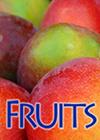A review of enset [Ensete ventricosum (Welw.) Cheesman] diversity and its use in Ethiopia
IF 0.5
4区 农林科学
Q4 HORTICULTURE
引用次数: 9
Abstract
Introduction – Enset is an indigenous crop in southern and southwestern Ethiopia, with a huge potential to provide year-round food production. Starch stored in the corm and pseudostem of the plant is the main source of energy provided by this crop. Enset was fully domesticated in Ethiopia between 10,000 and 5,000 years ago and initially farmed in a system of shifting cultivation. This long history of enset cultivation has contributed to the high withinspecies diversity. Materials and methods – This paper provides an overview of past research activities and knowledge linked to enset diversity and identifies critical research gaps, which should be addressed to improve the long-term conservation and use of this diversity. Results and discussion – Studies have identified numerous landraces across the vast ensetgrowing belt in Ethiopia, with genetic diversity in a particular area related to the extent of enset cultivation by different ethnic groups and the range of agro-ecologies to which the crop is adapted. Farmers’ rich knowledge of enset, accumulated over many years, plays a significant role in the characterization and maintenance of the existing genetic diversity of this crop. Farmers differentiate landraces using morphological traits, such as plant height and pseudostem size, angle of leaf orientation, and pseudostem and leaf colour. Conclusion – Enset diversity provides resilience and food security despite challenging environmental conditions, diseases or changes in land use systems.enset[Ensete ventricosum(Welw.)Cheesman]多样性及其在埃塞俄比亚的应用综述
简介-Enset是埃塞俄比亚南部和西南部的一种本土作物,具有提供全年粮食生产的巨大潜力。储存在植物球茎和假茎中的淀粉是这种作物提供能量的主要来源。恩塞特在10000年至5000年前在埃塞俄比亚被完全驯化,最初是在轮作制度下养殖的。这种悠久的整株栽培历史促成了物种间的高度多样性。材料和方法——本文概述了过去与enset多样性相关的研究活动和知识,并确定了关键的研究差距,应解决这些差距,以改善这种多样性的长期保护和利用。结果和讨论-研究已经在埃塞俄比亚广阔的种植带上确定了许多陆地种族,特定地区的遗传多样性与不同民族的种植程度和作物适应的农业生态范围有关。农民多年积累的丰富的enset知识对该作物现有遗传多样性的表征和维持起着重要作用。农民利用形态特征来区分地方品种,如株高和假茎大小、叶片方位角以及假茎和叶片颜色。结论——尽管环境条件、疾病或土地利用系统发生了变化,但生态系统的多样性提供了恢复力和粮食安全。
本文章由计算机程序翻译,如有差异,请以英文原文为准。
求助全文
约1分钟内获得全文
求助全文
来源期刊

Fruits
HORTICULTURE-
CiteScore
1.10
自引率
0.00%
发文量
22
审稿时长
>12 weeks
期刊介绍:
The scope of Fruits - the International Journal of Tropical and Subtropical Horticulture includes:Fruits - The International Journal of Tropical and Subtropical Horticulture
-crop production and cropping systems,
-breeding,
-genetics and
-the release of genetic material adapted to tropical and subtropical environments,
management,
-storage and market supply of underutilized crops,
-integrated management of pests and diseases,
-clinical relevant effect of tropical and subtropical horticultural species,
-peri-urban and urban tropical crop production,
-sustainable water and input use,
-capacity building in horticulture,
-value chain development in developing countries,
-seed science and agricultural engineering.
Fruits, The International Journal of Tropical and Subtropical Horticulture, deals with such crops as vegetables, fruits, spices, ornamentals and medicinal plants growing in the tropical and subtropical environment.
 求助内容:
求助内容: 应助结果提醒方式:
应助结果提醒方式:


